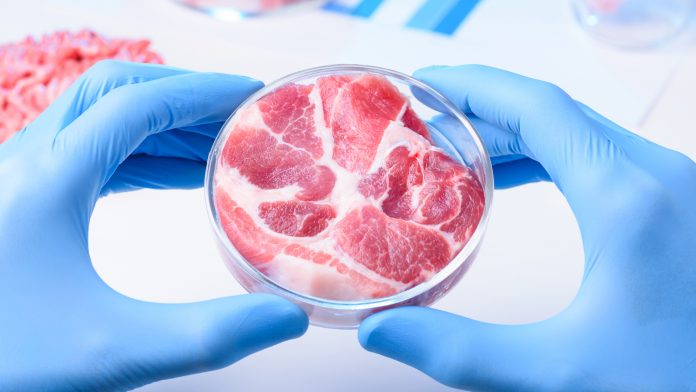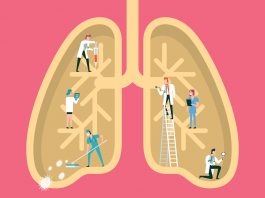UK Scientists have devised a groundbreaking lab system that can bioengineer meat by employing blades of grass, creating potential applications for food production and tissue repair.
The innovative method, created by researchers at the University of Bath, can efficiently use blades of grass to modify cells into cultured meat – meat that is cultivated painlessly from the muscle cells of living organisms – possibly providing an effective process to bioengineer meat that bypasses various ethical, economic, and environmental issues.
The resulting tissue could have a litany of purposes, such as lab-made meat to suffice global food demands or human muscle tissue used to repair or replace tissue lost or damaged through disease or injury.
The research is published in the Journal of Biomedical Materials Research and was led by Dr Paul De Bank, Department of Pharmacy & Pharmacology, Professor Marianne Ellis, Department of Chemical Engineering, and Scott Allan, a PhD researcher in the Department of Chemical Engineering.
Designing a new strategy to bioengineer meat
To bioengineer meat from grass, first, the researchers had to eliminate the native cells from the blades of grass, achieving this through a process call decellularisation. Next, the decellularised blades are seeded with a series of cells that are a derivative of the mouse cell line, which later would be replaced with bovine stem cells. The team then infused the scaffold’s surface with cell sticks, which began to multiply and build links with adjacent cells, ultimately evolving as a cell mass to create new 3D tissue.
Although this process appears to be seamless, there are numerous challenges that the scientists encountered when identifying the optimal scaffold on which to bioengineer meat. Vitally, it must be susceptible enough that cells can easily attach to its surface, allowing the cells to flourish and organise in a way that mirrors the fibres of the natural tissue they are imitating. For example, cells need to relax and contract in muscle fibres simultaneously, so it is paramount that this is replicated. In order to make the process viable on a commercial scale, the scaffold must be economical and simple to fabricate; furthermore, for lab-grown meat, the resulting product must be edible for humans.
Not quite grass-fed beef
Dr Paul De Bank, who led the research, said: “When we were looking for a scaffold for our cells, we wanted to find something that was both sustainable and edible. I thought along the lines of a decellularised natural material because cellulose (which grass is largely made of) is edible, but also because grass has aligned grooves that I hoped would allow the cells to line up together to make the fibres we needed – and it worked!
“When we eat beef, we’re partly eating the grass the cows have grazed on in their lifetime. What’s neat about our study is that it shows that we can directly replace the animals with the grass they eat. Our system needs to be scaled up, but I’m hopeful that sooner rather than later, we could have a meat product on the market based on grass.
“The adhesion of the animal stem cells to the grass surface was found to be around 35%, which is considered a good result. Often, decellularised plant scaffolds need to be chemically modified to get cells to grow on them. The great thing we’ve found with grass is that we get significant adhesion without further processing steps. We are, however, hoping to find a way to increase this adhesion – we have a new PhD student who will be working on this, exploring ways to optimise cell attachment and growth.”
The researchers are now aiming to scale up the method to generate the adequate amount of cells and scaffold material required to bioengineer considerable amounts of muscle tissue, which one day may transform the landscape of how we meet our dietary demands and treat muscle tissue injuries.









